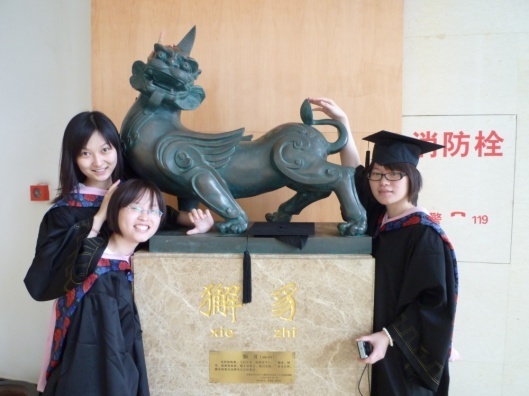China's law and the symbol of justice: Xie Zhi
- By Eugene Clark and Li Duomi
 0 Comment(s)
0 Comment(s) Print
Print E-mail China.org.cn, November 26, 2013
E-mail China.org.cn, November 26, 2013
Chinese President Xi Jinping has stressed the importance of understanding and celebrating China's past and using that knowledge and appreciation as an inspiration to achieve the China Dream of a brighter future for the nation's people and overall welfare. A vision for the future is what spurs people, organizations and nations into action. Symbols play an important role in reminding people of the original values that underpin the vision.
Xi has also addressed the importance of foreign experts in assisting China to further its development. Having been in this "foreign expert" role for a year now, I have come to see that it is the expert himself who learns the most from this relationship as he (or she) comes to learn more about the long, rich and varied aspects of one of the world's oldest and most enduring cultures. The privilege of teaching and interacting with students in one of China's most prestigious law schools has also taught me much.
One of the many things I have learned is the importance of symbols that reflect China's culture and history. Thanks to the influence of American media, most people recognize the Western symbol of justice: A blindfolded woman weighing the scales. Yet what is in fact the Chinese symbol of justice?
|
Xie Zhi (獬豸)is the Chinese symbol of justice |
As a lawyer and law academic, I have co-authored this article with Li Duomi (pictured below), a post graduate student in law at the China University of Political Science and Law in Beijing. Together we have sought to learn more about Xie Zhi (both pronounced in fourth tone), the legendary Chinese animal and the nation's symbol of law; a depiction of which one sees throughout China in the form of statutes, on traditional official ceremonial garments and in drawings.
|
Xie Zhi in the library of China University of Political Science and Law [courtesy of the author] |
Xie Zhi represents fairness, truthfulness and righteousness, as well as valor and vigor. This mythical creature is said to have a human nature and can understand human language. While there are variations in its manifestation, Xie Zhi has the appearance of Kylin. Kylin was a mythical animal of composite form in Chinese legends, usually bearing the head of a dragon, the horn of a stag, the eye of a lion, the back of a tiger, the waist of a bear, the scale of a snake/fish, the tail of an ox, and the hoof of a horse.
The figure of Xie Zhi is covered in black hair, with only one horn on its forehead. With the big bright angry eyes staring at people, Xie Zhi can distinguish right from wrong and good from evil. Whenever there are conflicts or disputes, it will point its horn at the person in the wrong or even gore the miscreant to death. When seeing iniquity or misbehavior committed by officials or ministers, it will knock them down with its horn and eat them. This emphasis on justice being proactively done and with clear sighted aim has always been interesting to me, as opposed to the more passive concept of a blind figure.








Go to Forum >>0 Comment(s)